Cultural Festivals: Tracing the Evolution from Time-Honoured Traditions to Contemporary Revelry
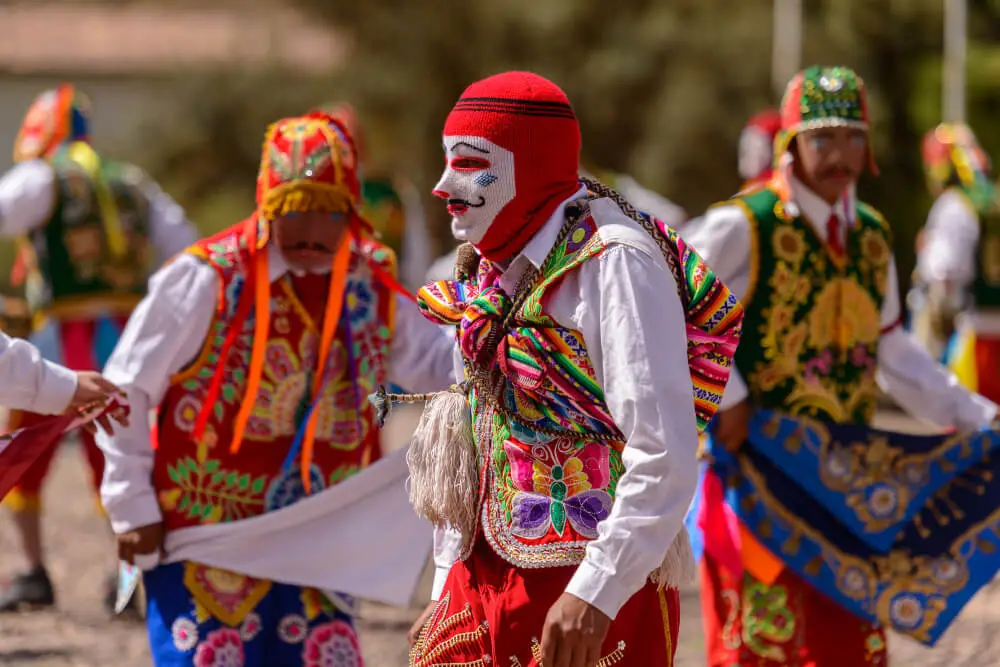
Updated On: April 22, 2024 by Yasmin Elwan
Cultural festivals are the tapestries that weave together the vivid palette of human history and social evolution. From the dawn of civilisation, these celebrations have served as milestones, marking significant moments in the lives of communities and nations alike.
Beginning as simple agricultural and seasonal markers, cultural festivals have blossomed into intricate spectacles that honour deep-rooted traditions while simultaneously reflecting the changes within a society. They are as diverse as the people who celebrate them, spanning the globe and encompassing a myriad of themes, from religious ceremonies to national holidays and everything in between.
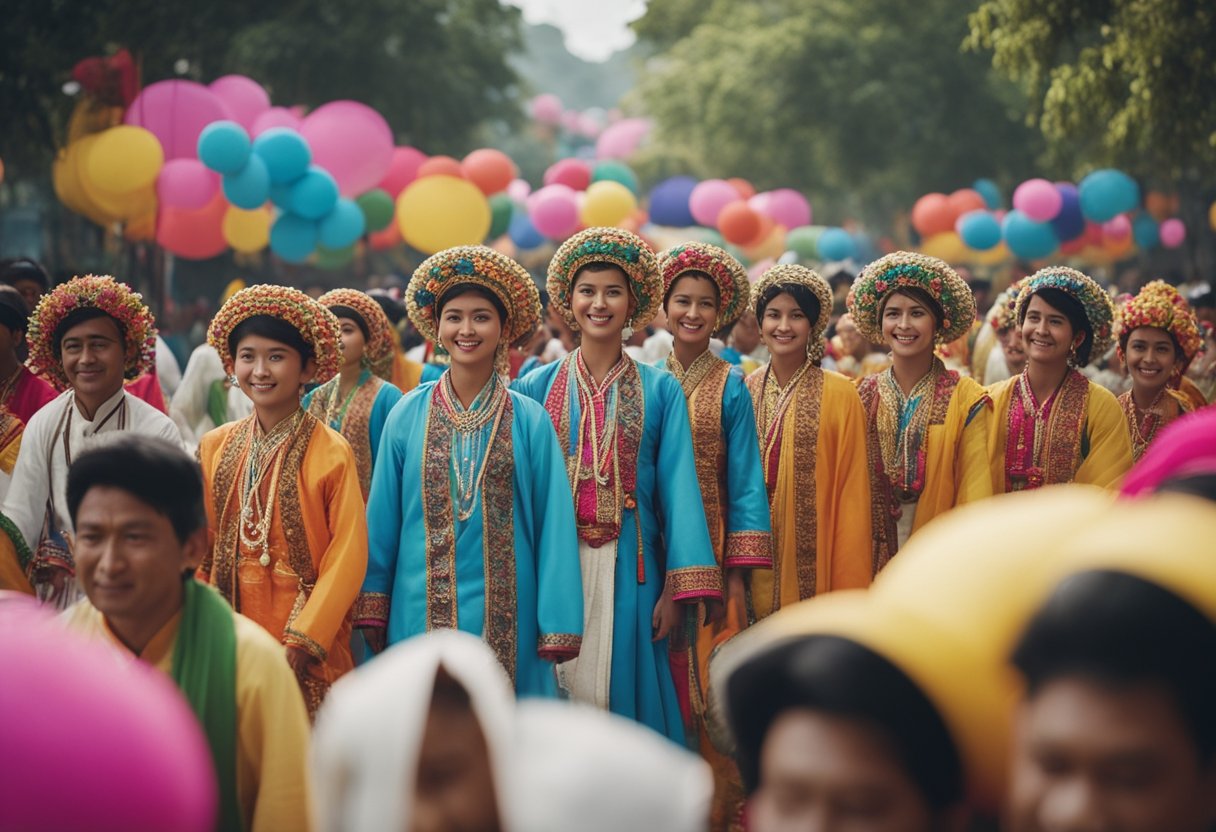
The transformation of these festivals over time is a testament to the adaptability and resilience of cultural practices. As symbols and rituals take on new meanings, they preserve the richness of the past whilst embracing the dynamic nature of the present. Today, festivals are more than just occasions for entertainment; they represent the unity of communities, strengthening the social fabric and promoting a sense of belonging. They are pivotal in the celebration of artistic expressions and serve as platforms for showcasing the unique aspects of a culture.
Historical Roots of Cultural Festivals
Cultural festivals have their origins steeped in ancient rituals and practices. Their enduring legacy gives us a meaningful perspective on the significance of these celebrations throughout human history.
Ancient Egyptian Celebrations
The ancient Egyptians celebrated a multitude of festivals that were intimately tied to the agricultural calendar and the worship of gods. Chief among these were celebrations honouring the pharaoh, who was believed to be a god in human form. Opet Festival, for example, was crucial for reaffirming the pharaoh’s divine right to rule. Priesthood played a vital role in conducting rituals in temples, which were thought to be the homes of gods. These events were not just religious ceremonies but were also times of public gathering and jubilation.
Roman Festivities and Their Impact
In ancient Rome, festivals had a significant role in the social and religious life of citizens. Roman festivities, like Saturnalia, which later influenced the celebration of Christmas, were major events. Temples served as the centres of worship and festivals, and the Roman calendar was replete with numerous feasts dedicated to various deities. These elaborate rituals and celebrations, some of which spanned multiple days, were a means to maintain favour with the gods and ensure the prosperity of the Roman state.
Religious Influence on Festivals
Festivals have been profoundly shaped by religious beliefs. Across different civilisations, including those in ancient Greece and Egypt, festivals were a way to connect with the divine. Greek festivals, closely linked to their pantheon of gods, included athletic competitions and cultural performances and were held in honour of gods like Zeus.
These events were not only religious observances but also fundamental to the cultural and political fabric of the society. Religious festivals have evolved over time, yet they retain their historical roots and continue to be celebrated in various forms to this day.
Evolution of Festivals Over Time
Festivals have significantly transformed from their origins in ancient rituals to encompass a wide spectrum of modern-day celebrations.
Medieval to Modern Transition
The Medieval to Modern Transition saw many festivals being reshaped to suit changing social and religious needs. A striking example is the metamorphosis of Christmas, originally a mishmash of several pagan celebrations like the Roman Saturnalia, which honoured the deity Saturn with feasting and gift-giving during the winter solstice.
With the spread of Christianity, these festivities were seamlessly co-opted into Christian doctrine, which rebranded a previously seasonal celebration into a significant Christian holiday. The shift further occurred with the adoption of the Julian calendar, standardising and fixing the date of Christmas.
Adaptation of Pagan Festivals
Pagan festivals adapted into the Christian calendar often retained vestiges of their heathen past. For instance, elements of Yule, celebrated by the Norse to honour Thor, influenced modern Christmas traditions, such as the Yule log symbolising the burning of an ash tree to encourage the sun’s return.
These festivals, originally set to natural seasonal rhythms, gradually found new meanings and interpretations. As a result, the process transformed many ancient religious festivals into events with broader cultural significance, integrating various traditions into a cohesive, albeit complex, tapestry of celebration.
Significance of Festival Symbols and Rituals
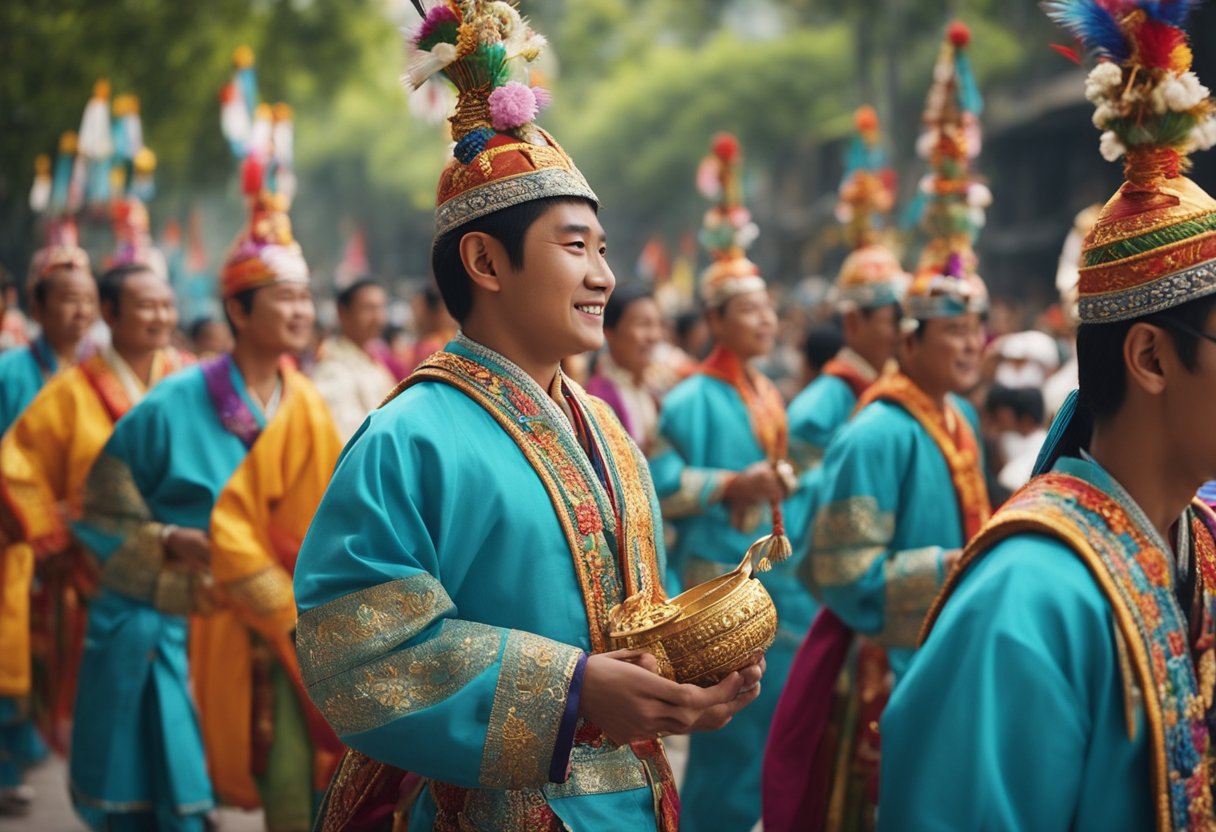
Festivals across the globe serve as a reflection of cultural values and historical traditions, often embodied in their symbols and rituals. Festival symbols such as fire and light, or customary elements like food and feasts, each carry distinct meanings and have played key roles in celebrations since ancient times.
Fire and Light
Festivals have long embraced fire and light as symbols of life, guidance, and purification. Bonfires, often a feature of ancient Celtic rituals, illuminate festivities, with flames representing the sun’s life-giving energy. For example, in Ireland, Beltane fires were lit to honour the summer solstice and encourage a fruitful harvest.
Similarly, candles hold significance in numerous religious and spiritual observances, offering light in the darkness and symbolising hope or divine presence. During Diwali, the Hindu festival of lights, lamps and candles are lit to signify the triumph of good over evil and enlightenment over ignorance.
Food and Feasts
The act of feasting together is a cornerstone of many festivals, creating a communal bond and celebrating bounty. Speciality foods, from bread symbolising sustenance in Harvest Festivals to wine and beer marking joy and prosperity, are omnipresent. In ancient Mesopotamia, the Akitu festival involved communal feasts to celebrate the New Year and ensure the gods were content.
Notably, during the Jewish holiday of Passover, items like unleavened bread (matzah) signify historical events. Similarly, in Christian traditions, wine represents the blood of Christ, central to the Eucharistic celebration. Milk, often affiliated with purity and abundance, is used in festivals such as Holi in India, where traditional drinks spiced with nuts and herbs are shared among participants. These edible emblems not only please the palate but also enrich the ceremonial significance of cultural festivities.
Cultural Festivals as a Reflection of Society
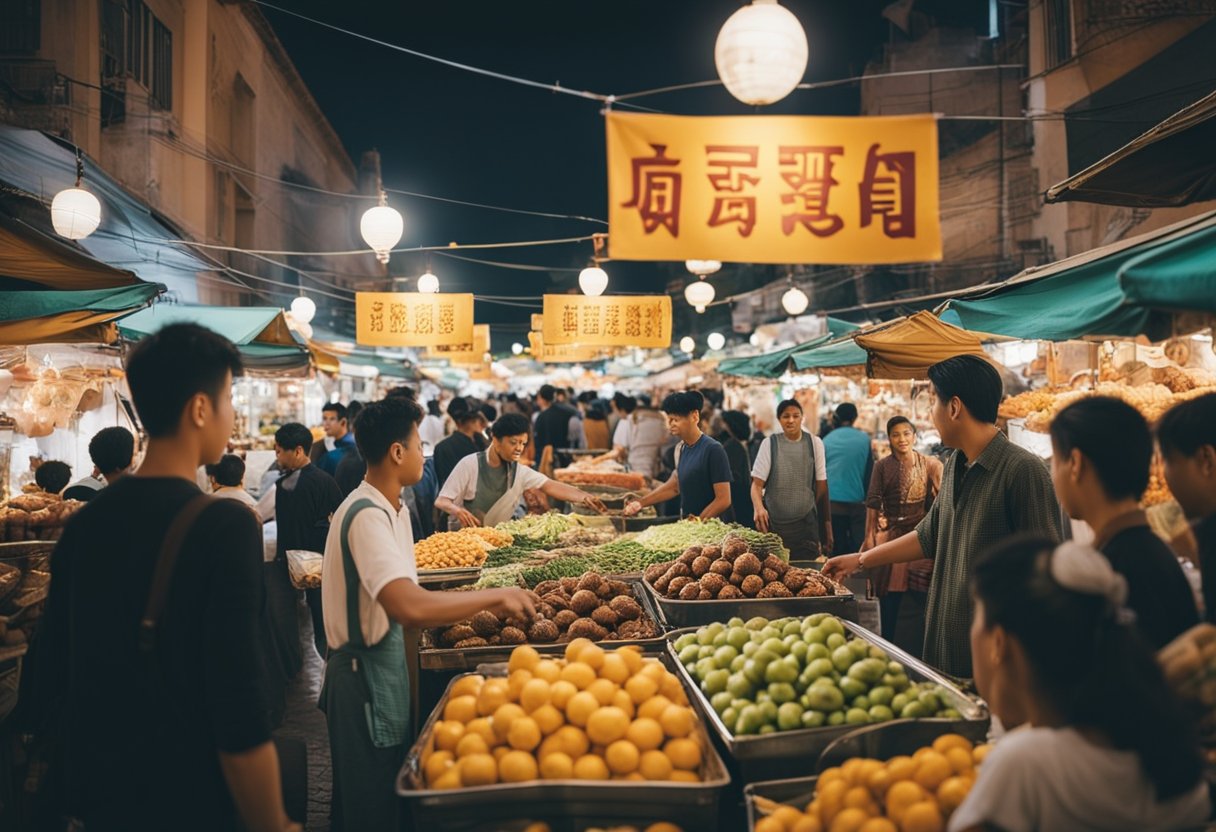
Cultural festivals serve as a mirror, reflecting the values, traditions, and social dynamics of a civilization. They often evolve from agricultural and seasonal rituals into vibrant urban celebrations that bear the identity and heritage of a nation.
From Agricultural Roots to Urban Celebrations
Historically, many festivals had their origins in rural agricultural societies where the cycles of planting and harvest dictated the rhythm of life. These local festivals were directly connected to the earth’s seasons and the community’s livelihood. As time progressed and societies urbanised, these celebrations transformed. While they retain their connection to agricultural practices, urban festivals have grown to incorporate more diverse cultural expressions.
For example, the Akitu festival, beginning in Sumer, celebrated the harvest and reaffirmed the power of the king. It stands as a testament to how even ancient civilisations used festivals to connect their communities through shared experiences grounded in the natural world. In the contemporary era, although fewer of us are directly involved in agriculture, these festivals persist in modified forms, often as a means of preserving our connection to nature and cultural heritage within an urban context.
National Identity and Festivals
National holidays and festivals are pivotal in moulding and expressing a nation’s identity. These events serve as a unifying force, bringing together citizens from disparate backgrounds to celebrate shared values and history. They can also be a demonstration of national power and a means for society to showcase its accomplishments.
Take, for instance, national day celebrations that feature parades, fireworks, and public speeches, such as those seen across the United Kingdom. As we come together during these festivities, we engage in a collective act of remembrance and projection of our national story. Whether charismatic or solemn, festivals on a national level are an opportunity for society to reaffirm its belonging and to celebrate the threads that weave together the fabric of our nation.
Role of Festivals in Community Building
Festivals foster social participation and unity and facilitate cultural exchange and interaction, playing a vital role in knitting the fabric of communities.
Social Participation and Unity
Festivals serve as an exceptional platform for social participation, drawing individuals from diverse backgrounds to partake in celebrations. Through collective activities and shared experiences, members of the community engage with one another, igniting a sense of camaraderie and togetherness. This unity is often visible in annual events where participation becomes tradition, reinforcing a community’s coherent identity over time.
Cultural Exchange and Interaction
Additionally, festivals act as hubs for cultural exchange and interaction, where traditions intermingle and new ideas are welcomed. They provide opportunities for communities to showcase and revel in their cultural heritage, while also being open to learn about and appreciate the customs of others. This interaction contributes to a dynamic, multicultural society where understanding and respect for different ways of life are cultivated.
Festivals and the Arts
Festivals serve as a vibrant showcase for the performing arts, bringing together musicians, dancers, and artists in a display of cultural pride and talent.
Music and Dance
At the heart of many festivals around the world, one can find the rhythmic beats of drummers and the fluid movements of dancers. These performers come together in a dynamic expression of cultural identity and artistic skill. Music and dance are not just entertainment; they are the lifeblood of many celebrations, whether echoing ancient rituals or modern creative trends. For example, the haunting melodies of traditional Irish music find their stage at festivals, where each note and step tells a story woven into the fabric of the nation’s rich history.
Artistic Competitions
Artistic competitions also play a crucial role in festivals, offering a space for artists to demonstrate their mastery and creativity. From local art shows to prestigious international contests, these competitions can often launch the careers of new artists or cement the legacies of established ones. Indeed, the competitive spirit adds a thrilling dimension to festivals, as both participants and spectators become part of the communal experience of artistry and excellence.
Festivals have long been a canvas for the arts, celebrating the diverse forms of creative expression that define our cultures. Through the shared experience of music, dance, and competition, we not only entertain but also connect with one another on a profound level.
Global Festivals and Their Variations
In our examination of cultural festivities, we observe a kaleidoscope of traditions that mirror the diversity and historical depth of societies worldwide.
Celebrations Around the World
Holi – Celebrated primarily in India and Nepal, Holi marks the arrival of spring with vibrant colours and joyous festivities. It is a time when people smear each other with colours and douse each other with water, symbolising the victory of good over evil and the fervour of life. Discover more about the festival of colours.
Songkran – Thailand’s traditional New Year’s celebration, known as Songkran, is characterised by the nationwide water fights, representing purification and the washing away of sins and bad luck.
Oktoberfest – Originating in Munich, Germany, Oktoberfest has become a global phenomenon celebrating Bavarian culture, folk music, and, notably, beer. The festival, with its large consumption of Oktoberfestbier, attracts millions of visitors from around the world. Learn about Oktoberfest’s rich history and today’s global celebrations of chocolate.
Thanksgiving Day – While Thanksgiving in the United States is a harvest festival commemorating the Pilgrims’ first successful harvest, it is also celebrated in other countries with their unique twists, often highlighting a spirit of gratitude.
Mardi Gras – Known as ‘Fat Tuesday’ in English, Mardi Gras is a celebration full of parades, masquerade balls, and indulgent eating before the fasting season of Lent in Christian traditions.
St. Patrick’s Day – St. Patrick’s Day has grown from a religious feast day for the patron saint of Ireland into an international celebration of Irish culture with parades, special foods, music, dancing, and a whole lot of green. Here’s how St. Patrick’s Day is celebrated globally.
Each festival has its distinct origins and customs that have, over time, spread across borders and often taken on new meanings and forms, reflecting the constant evolution of cultural celebrations.
Economic Impact of Cultural Festivals
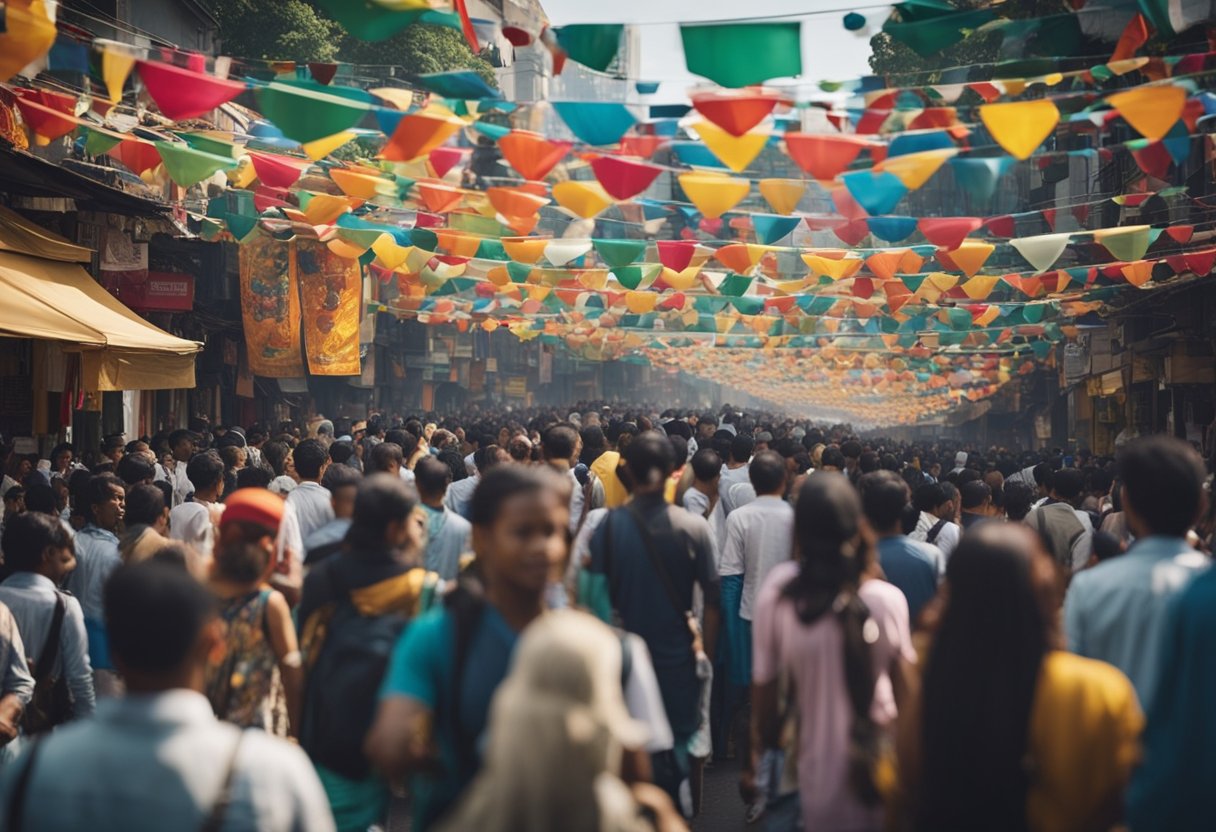
Cultural festivals play a significant role in boosting the local economy by attracting tourists who spend on accommodation, food, entertainment, and souvenirs.
Festivals as Tourist Attractions
Festivals serve as major tourist magnets, injecting life into the economy through a variety of channels. Tourists drawn by cultural celebrations contribute to the economy in several direct and indirect ways. Cultural festivals often witness a surge in visitor numbers, which in turn leads to increased spending in the local area. This includes outlays for lodging, dining, shopping, and admissions to festival-related events.
Local businesses, from hotels to restaurants and retail outlets, generally experience a marked uplift in sales. The knock-on effect of this increase in commerce can be substantial, leading to job creation and greater income for local residents involved in the tourism and service sectors. An analysis of the economic impact of cultural festivals highlights the broad reach such events have on the local economy, not only bringing in revenue but also showcasing the locale as a vibrant place to visit.
In some instances, festivals specifically celebrate the cultural heritage of an area, attracting niche tourists who may be more inclined to invest in authentic, local experiences. This not only generates revenue but also helps to preserve cultural practices. The revenue generated from these events contributes to the sustainability of the festivals themselves as well as the community at large.
Moreover, festivals provide a platform for local artisans and performers, offering them a valuable opportunity to market their crafts and talents to a wider audience, often resulting in a longer-term economic benefit beyond the festival period. As tourists return home, they may become indirect ambassadors for the festival and region, sharing their experiences and potentially inspiring future tourism.
Preservation and Revival of Traditional Festivals
In our quest to safeguard cultural heritage, we recognise the pivotal role of festivals in rejuvenating and maintaining age-old customs. These festive occasions are often tied to the lunar calendar and provide a sanctuary for traditions to thrive.
Modern Interpretations of Ancient Traditions
Festivals are deeply embedded in our cultural fabric, serving as torchbearers of tradition while simultaneously adapting to contemporary times. The preservation of customs is crucial, as it provides continuity and connection to our ancestral roots. This is evident in festivities that have been reinvigorated after periods of stagnation, such as the Qiqiao Festival, which has resumed its place in the cultural landscape of Southern China after half a century of suppression.
Through the revival of these festivals, not only are the customs of the past honoured, but they are also reshaped to resonate with modern societies. In contemporary interpretations, ancient rituals are often interlaced with current social and cultural trends, allowing them to remain relevant and engaging for younger generations. By doing so, these festivals serve as living sanctuaries, preserving the essence of our cultural identity while reflecting current societal values.
Cultural Festivals and Contemporary Challenges
Cultural festivals face numerous challenges in the contemporary world, including the effects of globalisation and the necessity of sustainable practices.
Impact of Globalisation
Globalisation has significantly altered the landscape of cultural festivals. As we observe cultures converging, there’s a concern that unique traditions may lose their originality. Globalisation paves the way for cultural exchange and broadens the audience for local festivals, yet it also poses the risk of cultural homogenisation. Festivals like the ancient rituals in Greece, once embedded in particular local contexts, are now accessible worldwide, influencing and being influenced by other cultural expressions.
Sustainability and Environmental Concerns
Cultural festivals nowadays must grapple with sustainability and their environmental impact. Many festivals, like the annual events in Egypt that have endured throughout history, have adopted eco-friendly practices to minimise their carbon footprint.
There’s a drive towards creating a balance where the festival’s spirit is kept alive without harming the environment. Celebrations must consider waste management, energy consumption, and the long-term viability of the cultural practices they uphold. For instance, some festivals have begun implementing zero-waste initiatives and encouraging participants to use public transport to reduce environmental strain.
The Future of Cultural Festivals

Cultural festivals have always been a reflection of societal values and technological advancements. As we look to the future, these events are poised to become an even more intricate blend of tradition and innovation.
Technology, such as virtual reality, is likely to play a significant role in how we experience festivals. It has the potential to transport us to celebrations across the globe from the comfort of our homes. Likewise, augmented reality could add layers of interactivity to festivals, allowing us to engage with cultural practices in new ways.
The trends within cultural festivals are also shifting. There is an increasing emphasis on sustainability, with festivals adopting eco-friendly practices—from waste reduction to energy conservation. This move not only aligns with global environmental goals but also ensures the preservation of the cultural integrity of the event locations.
In terms of innovation, the future might hold festivals that are entirely carbon-neutral, using renewable energy sources and promoting environmental conservation as an integral part of their culture and heritage. The use of technology could extend to planning and operations, leveraging data to minimise crowd-related issues and to enhance safety and convenience for attendees.
- Anticipated changes include:
- Increased digital integration
- Stronger focus on sustainability
- More interactive and immersive experiences
- Eyecatching innovations like drones for light displays or AI for personalised festival experiences
We will likely see a blend of digital and physical elements as standard, with festivals offering both on-site and virtual participation options to maximise inclusivity and reach. The heart and soul of cultural festivals will remain, but the way we participate and what we take away from these celebrations will evolve, ensuring they remain relevant and engaging for future generations.
Frequently Asked Questions
In this section, we provide answers to some of the most frequently asked questions about cultural festivals, highlighting their evolution from ancient rituals to the vibrant celebrations we participate in today.
What constitutes a cultural festival in contemporary society compared to ancient times?
Cultural festivals in contemporary society often blend traditional elements with modern practices, whereas ancient times focused more on rituals with specific religious or cultural purposes. These festivals serve as a celebration of identity and community, reflecting the diversity and complexity of modern culture.
How have traditional rituals evolved into the cultural festivals we see today?
Traditional rituals have adapted over time, evolving from strictly religious or seasonal ceremonies to encompass broader themes such as arts, music, and community spirit. This evolution is the result of the dynamic nature of culture, as societies incorporate new ideas and influences.
Could you provide examples of rituals that have their roots in religious practices?
Many of our contemporary festivals have origins in religious rituals, such as Christmas celebrations derived from Christian traditions, and Diwali, linked to several religions including Hinduism and Jainism, both retaining symbols and practices from their religious roots.
Which cultural events are considered the most ancient and still celebrated today?
Some of the world’s most ancient cultural events that are still celebrated include the Chinese New Year, with its beginnings in the Shang Dynasty, and the Pascha Easter traditions that have been ongoing since the early Christian Church.
In what ways do modern-day cultural festivals reflect their historical origins?
Modern-day cultural festivals often maintain core elements of their historical origins, such as special foods, dances, and costumes, while also adapting to contemporary societal changes. This reflects a respect for tradition alongside a recognition of evolving cultural landscapes.
What are the common elements shared among different cultural festivals worldwide?
Different cultural festivals worldwide commonly share elements such as ceremonial food and drink, music and dance, and activities that strengthen communal bonds and heritage appreciation, all converging to celebrate human connection and shared experiences.






